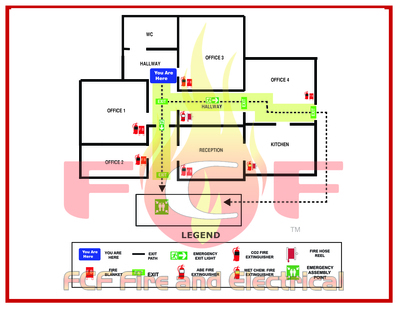The wollongong evacuation diagram is a visual representation of the path that people will follow in an emergency. It shows the route that people should take in order to escape, and how long it takes them to do so.

The diagram is usually drawn up by planners before any kind of disaster has occurred, so that they can plan routes and determine how many people they can evacuate in a given amount of time. The diagram may also be used to determine where sheltering areas should be set up in advance.
On an evacuation diagram, the names of each room and their codes are written in the diagram. In addition, there will be spaces for:
– The floor number or suite number of each room.
– The fire alarm control panel.
– The fire sprinkler system.
– A clock showing what time the evacuation should begin.
– A diagram showing where people should go when they leave their rooms or areas.
Wollongong evacuation diagrams are used to help people understand how to safely evacuate a building or room and move through a space. They are usually found on signs in buildings, and they can be used for both evacuation and fire safety in buildings.
Evacuation diagrams are often used in conjunction with other safety signage like exit routes and fire safety procedures. The diagram itself is simple — it shows the path that people will take when evacuating a building or room. The diagram will be different depending on whether you need to evacuate quickly or slowly, so it’s important that you understand this before you use it in your workplace.
The wollongong evacuation diagram is drawn as an arc that indicates the direction of travel in relation to the floor plan of the building, rather than showing actual positions of people inside spaces. This means that the diagram doesn’t show where people actually were at any given time; it only shows their direction of movement as they moved throughout the space.
The evacuation diagram is a visual aid that can be used to help identify the most likely path of fire and smoke through a building. It also helps in determining what areas within the building are vulnerable to flames and smoke, and in identifying which areas should be evacuated.
The evacuation diagram is a simplified version of the floor plan, showing only those areas that could become unsafe if fire occurs. The diagram consists of three main parts:
Floor A shows which floors contain fire hazards, such as electrical equipment or fuel tanks. This information is useful for those who may need to check these areas during an evacuation or when searching for a missing person.
Floor B shows which floors are at risk of being damaged by smoke or heat from a fire (see image below). It also identifies any stairwells that may need special attention during an evacuation (e.g., large groups may have difficulty evacuating the second floor if there’s no staircase).
Floor C shows what rooms are at risk from smoke and heat from a fire; this includes stairwells, mechanical rooms and other spaces where people may go during an emergency (i.e., closets).


